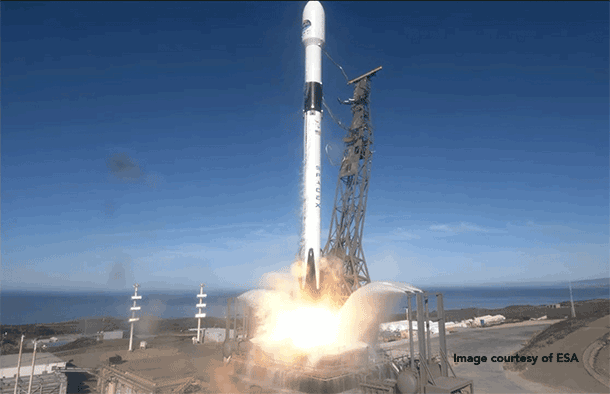Successful Sentinel-6 blastoff

Bang on time, at 17.17 hours GMT (18.17 hours CET) on 21 November, the European Copernicus program’s satellite Sentinel-6A Michael Freilich was successfully launched from the Vandenberg Air Force Base (VAFB) in California atop a SpaceX Falcon 9 rocket.
Copernicus is an ambitious European program for endowing earth observation with technological autonomy and capability. Previously known as Global Monitoring for Environment and Security, this program comprises six Sentinel satellite families that are already in operational deployment phase: Sentinel-1, designed to ensure the continuity of the radar data from European Remote Sensing (ERS) satellites and Envisat; Sentinel-2 and -3, dedicated to earth and ocean monitoring; Sentinel-4 and -5, for atmosphere-based meteorology and climatology missions; and Sentinel 6 or Jason-CS, which will make high precision observations of ocean surface topography. In the pipeline, moreover, are another six missions that have been cleared for the development process (CO2M, LSTM, CRISTAL, CIMR, ROSE-L and CHIME).
Rising sea levels are one of the greatest climate-change threats. Precise, decades-long monitoring of sea-level changes is therefore a vital strand of today’s climatology to enable decision-makers to act accordingly and, in the last analysis, to protect people living in vulnerable, low-level areas.
The Sentinel-6 mission comprises two identical satellites, Sentinel-6A Michael Freilich and Sentinel-6B, launched five years apart and due to provide readings up to 2030 at least.
GMV’s most important activities under the Sentinel-6A Michael Freilich mission include development and setting up of the control center located in ESA’s European Space Operations Centre (ESOC), which keeps track of mission development during the launch and early orbit phase (LEOP). GMV also made a big contribution to development of the orbital control systems, as well as providing satellite-launch support.
GMV has also been responsible for development of the control center set up in the European Organization for the Exploitation of Meteorological Satellites (EUMETSAT) for mission control during the routine phase, to which must be added development and deployment of the orbital control system and the mission planning system, which will also take charge during the commissioning phase of ensuring that the mission meets specifications.
Last but not least, as part of the overall service that GMV provides for all Sentinel satellites, GMV will also regularly and continually provide the Precise Orbit Determination (POD) service under an ESA framework contract. This service is necessary for processing and using the mission’s onboard instrument data.